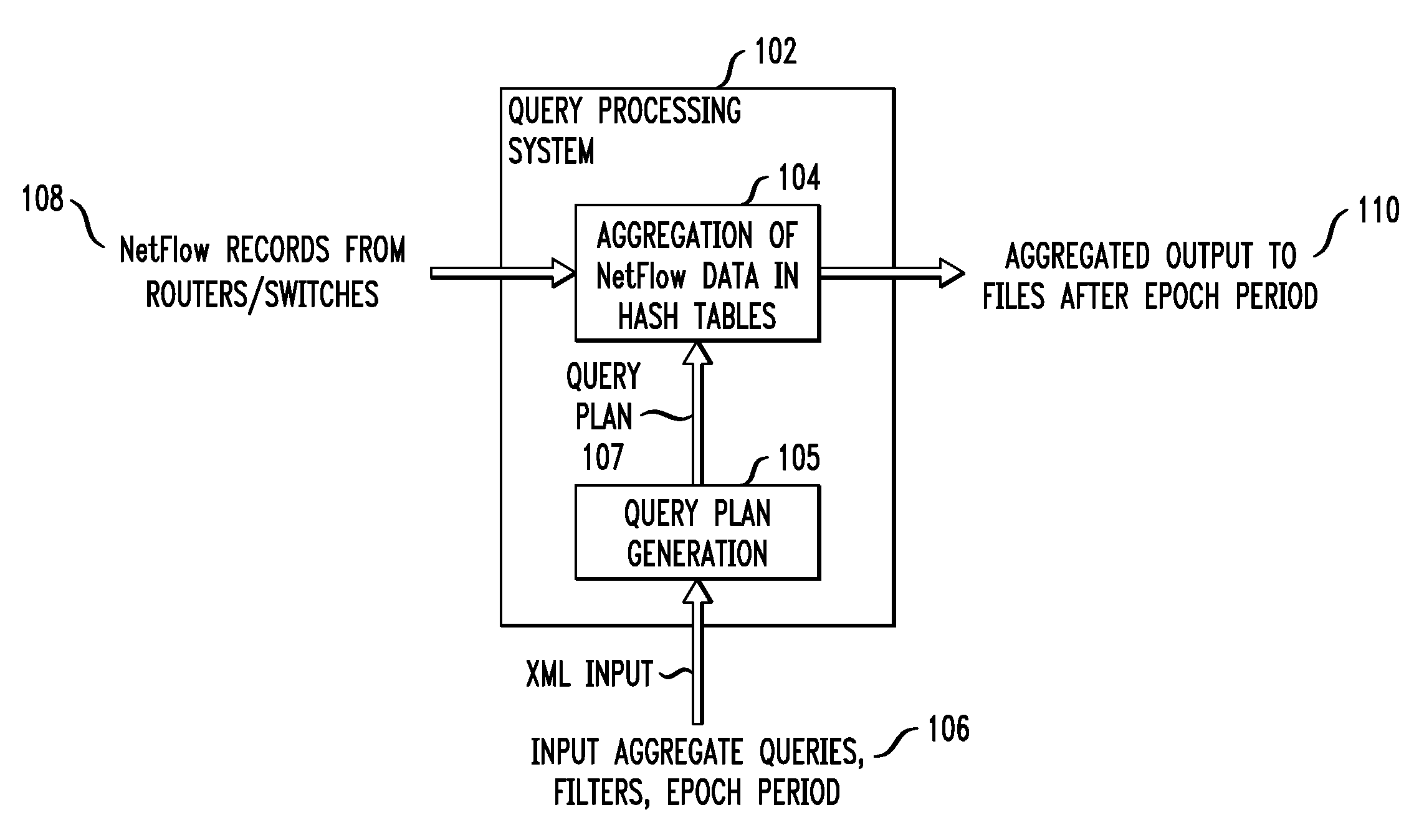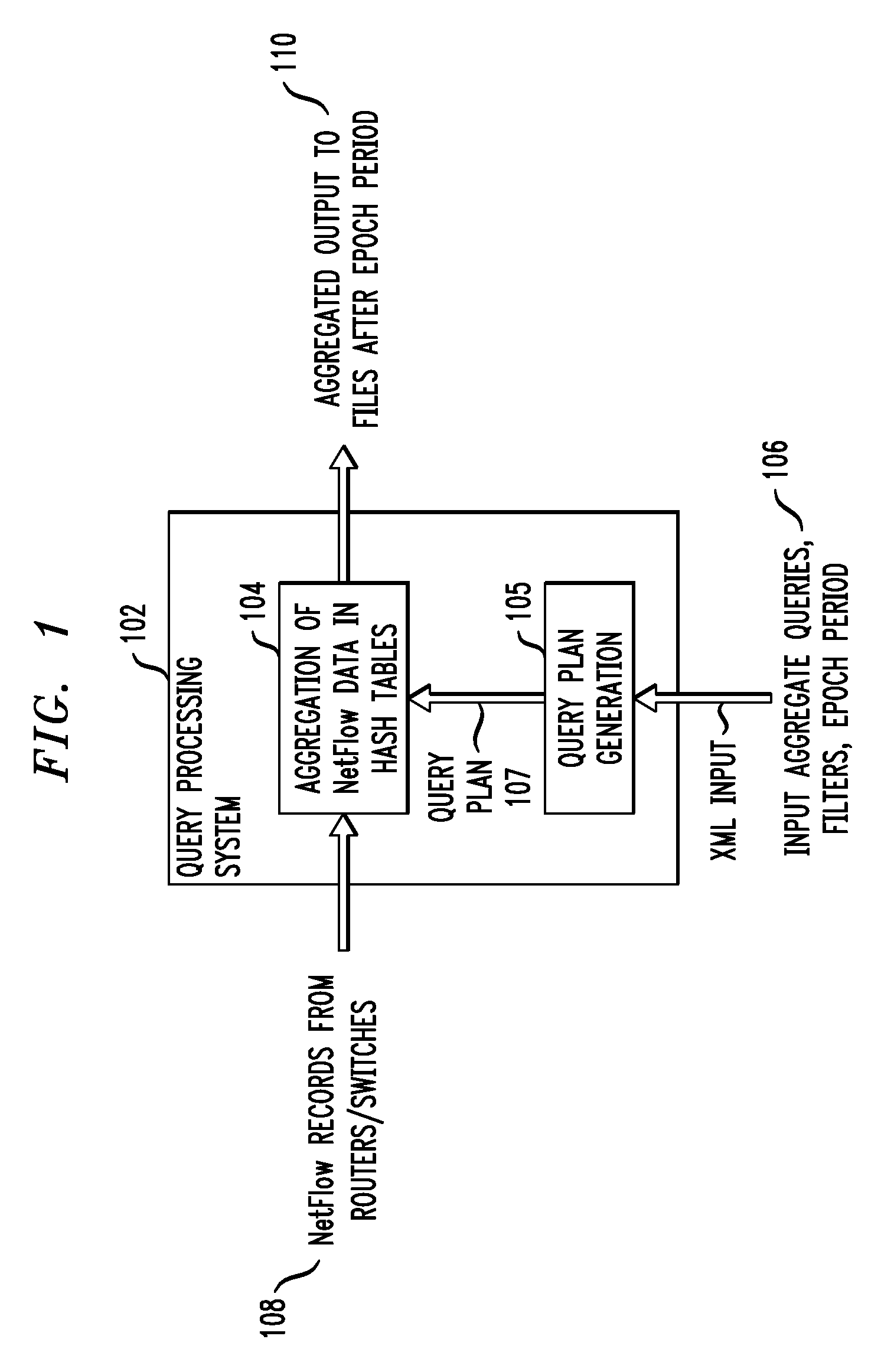Method and Apparatus for Efficient Aggregate Computation over Data Streams
a data stream and aggregate computation technology, applied in the field of data processing systems, can solve the problems of nave query answering systems that process the queries separately for each incoming record, and cannot keep up with the high stream ra
- Summary
- Abstract
- Description
- Claims
- Application Information
AI Technical Summary
Benefits of technology
Problems solved by technology
Method used
Image
Examples
example 1
[0070]Consider a stream with attributes a,b,c and d. Also let the aggregates AiεA be defined as follows: Ai={a,b}, A2={a,c}, and A3={c,d}. Below, we look at 3 strategies for computing the aggregates Ai (we assume that the hashing cost CH (Ai) is proportional to the number of attributes in Ai).
[0071]Strategy 1. This is the naive strategy in which each aggregate Ai is computed directly from the stream (see FIG. 3(a)). Thus, the total cost of computing the aggregates is ΣiN·CH(Ai).
[0072]Strategy 2. This is the other extreme in which we instantiate a single intermediate aggregate that covers all the aggregates Ai. (see FIG. 3(b)). Let Bi={a,b,c,d} denote this aggregate. Each time period T, the result tuples in Bi are scanned and inserted into the hash tables for each Ai to compute the final result tuples. The cost of processing the aggregates is thus the sum of the following two costs: (1) N·CH(Bi), the cost of instantiating Bi from the stream; and (2) Σisz(Bi)·CH(Ai), the cost of gener...
example 2
[0098]Consider a stream with attributes a, b, c, and d each with domain {0, . . . ,1000}. For purposes of illustration, we assume that attribute values are uniformly distributed and independent. Let there be three queries: (1) Q1 with group-by attributes {a,b} and filter 0≦a≦95; (2) Q2 with group-by attributes {a,c} and filter 50≦a≦100; and (3) Q3 with group-by attributes {a,d} and filter 200≦a≦300. Now there are multiple query evaluation strategies possible here, which we consider below.
[0099]Strategy 1. The naive strategy is to process each query separately (see FIG. 6(a))—thus for each stream tuple, query pair, we first check to see if the tuple satisfies the query filter, and if so, we insert the tuple into the hash table for the query.
[0100]Strategy 2. Now a more efficient strategy can be devised based on the observation that the filters F1 and F2 have a fair amount of overlap and so can be merged to create a new filter, G1=0≦a≦100. Note that G1 is equivalent to F1F2. The idea ...
PUM
 Login to View More
Login to View More Abstract
Description
Claims
Application Information
 Login to View More
Login to View More - R&D
- Intellectual Property
- Life Sciences
- Materials
- Tech Scout
- Unparalleled Data Quality
- Higher Quality Content
- 60% Fewer Hallucinations
Browse by: Latest US Patents, China's latest patents, Technical Efficacy Thesaurus, Application Domain, Technology Topic, Popular Technical Reports.
© 2025 PatSnap. All rights reserved.Legal|Privacy policy|Modern Slavery Act Transparency Statement|Sitemap|About US| Contact US: help@patsnap.com



